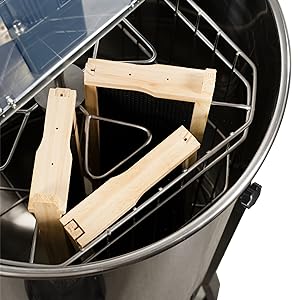I am planning on purchasing an extractor in the near future. I hate buying cheap, but at the same time I don't want to sink $1,500 into it either.
My current goal is to maintain (5) strong hives year round, and maybe a couple of nucs.
I am not looking to make this a full time job, but it would be attractive if it could pay for itself.
How many mediums would you keep on a good hive?
How much honey could one reasonably expect to collect from that hive (pounds)?
What is a reasonable rate for honey ($/pound)?
What is involved in selling honey, small scale, local, legitimately? Inspection? LLC? Taxes?
What is a good extractor for my situation? I don't mind cranking, but honestly I would prefer to flip a switch and come back 10 minutes later to empty frames.
My current goal is to maintain (5) strong hives year round, and maybe a couple of nucs.
I am not looking to make this a full time job, but it would be attractive if it could pay for itself.
How many mediums would you keep on a good hive?
How much honey could one reasonably expect to collect from that hive (pounds)?
What is a reasonable rate for honey ($/pound)?
What is involved in selling honey, small scale, local, legitimately? Inspection? LLC? Taxes?
What is a good extractor for my situation? I don't mind cranking, but honestly I would prefer to flip a switch and come back 10 minutes later to empty frames.





